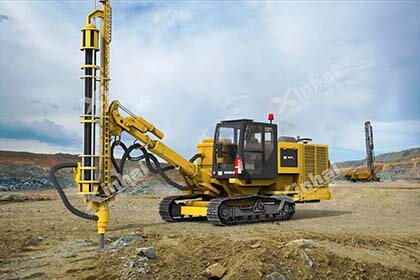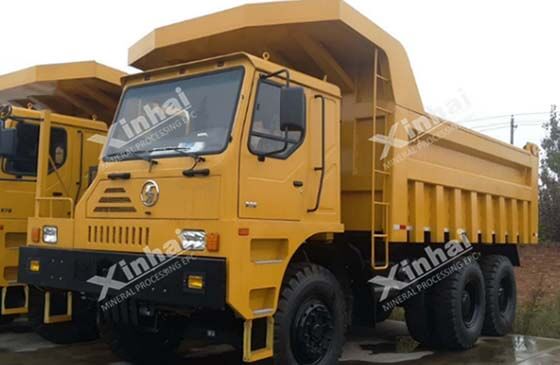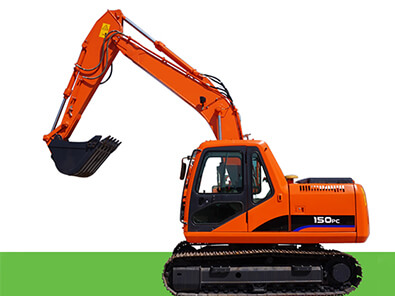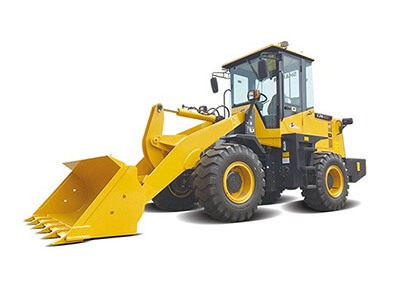Unveiling the Depths: Understanding Open Pit Mining
 Essow
Essow
 Mar 30, 2024
Mar 30, 2024
 1456
1456
If you want to know more details about equipment, solutions, etc, please click the button below for free consultation, or leave your requirements!
Open pit mining, also known as open-cast or open-cut mining, is a method employed to extract valuable minerals or geological materials from the surface of the Earth. It is a prominent form of mining that involves the removal of overlying soil and rock to access deposits that lie beneath. This article delves into the world of open pit mining, exploring its techniques, advantages, environmental considerations, and its impact on local communities.
01 The Technique of Open Pit Mining
BackThe technique of open pit mining involves a series of stages and processes that allow for the efficient extraction of minerals from the Earth's surface. Let's delve deeper into each step of the process:
1. Exploration and Surveying
The first step in open pit mining is to identify a viable deposit through exploration and surveying. Geologists and mining engineers conduct surveys and collect geological data to assess the quality, quantity, and distribution of the mineral deposits. This involves analyzing rock samples, conducting geophysical surveys, and using various exploration techniques to determine the economic viability of the deposit.
2. Planning and Design
Once a suitable deposit is identified, detailed planning and design are carried out. This involves determining the optimal pit layout, location of infrastructure, and overall mine design. Factors such as geotechnical considerations, equipment selection, and environmental impact assessments are taken into account during this phase.
3. Stripping
Stripping, also known as the removal of overburden, is the process of removing the surface materials that cover the mineral deposit. This typically includes vegetation, soil, and rocks that are not economically valuable. Stripping exposes the ore body, allowing for easier access during the extraction phase. Excavators, bulldozers, and trucks are commonly used in this process.
4. Drilling and Blasting
Once the overburden is removed, drilling and blasting operations are conducted to fragment the rock and facilitate the extraction of minerals. Drill rigs are used to bore holes into the rock, and explosives are placed in these holes. The controlled detonation of explosives breaks the rock into smaller pieces, making it easier to handle and transport.

(Open-pit Downhole Drill)
5. Excavation and Hauling
After blasting, excavation equipment such as large haul trucks, hydraulic shovels, and loaders are utilized to remove the fragmented rock and transport it to the processing plant or waste disposal areas. The ore and waste rock are separated during this stage, with the valuable minerals being transported for further processing.
6. Processing
Once the ore is transported to the processing plant, it undergoes various processes to extract and refine the desired minerals. These processes can include crushing, grinding, sorting, and chemical treatments. The goal is to separate the valuable minerals from the ore, producing a refined product that can be further processed or sold.
7. Reclamation and Closure
As mining operations progress and specific areas are depleted, reclamation efforts are undertaken to restore the land and minimize the environmental impact. This involves re-contouring the land, stabilizing slopes, re-vegetating the area, and implementing erosion control measures. The final stage of open pit mining is the closure of the mine, which includes decommissioning infrastructure, managing waste, and monitoring the site for environmental impacts.
Throughout the entire process, the safety of workers and environmental considerations are of paramount importance. Strict safety protocols, equipment maintenance, and training programs are implemented to ensure the well-being of the workforce. Environmental monitoring and mitigation measures are also in place to minimize the impact on ecosystems, water resources, and air quality.

(Dump Truck)
02 Advantages of Open Pit Mining
BackOpen pit mining offers several advantages that make it a preferred method for extracting minerals:
1. Efficiency
Open pit mining allows for large-scale operations, enabling the extraction of substantial quantities of minerals efficiently. This makes it economically viable for minerals that are dispersed over a wide area.
2. Accessibility
Unlike underground mining, open pit mining provides direct access to the mineral deposits. This facilitates easier extraction and reduces the complexity of mining operations.
3. Safety
Open pit mining generally poses fewer risks to miners compared to underground mining. The absence of underground tunnels and the ability to use large machinery result in a safer working environment.
Resource Recovery: Open pit mining allows for efficient recovery of minerals, as the entire ore body is accessible. This enables a higher extraction rate and minimizes resource wastage.
4. Flexibility
Open pit mining allows for easy adaptation to changing economic and geological conditions. If market demand or the quality of the deposit changes, mining operations can be adjusted accordingly.

(Bulldozer)
03 Environmental Considerations
BackWhile open pit mining offers numerous benefits, it is not without environmental considerations:
1. Land Disturbance
Open pit mining involves the removal of soil and vegetation, resulting in significant land disturbance. The loss of habitat and alteration of ecosystems can have long-lasting ecological impacts. Proper land reclamation and rehabilitation techniques must be employed to restore the affected areas.
2. Water Management
Open pit mining can affect local water systems by altering natural drainage patterns and water tables. The removal of overburden and the exposure of minerals can lead to acid mine drainage, where water interacts with exposed minerals, causing water pollution. Proper water management strategies must be implemented to minimize the potential for pollution and ensure the sustainability of water resources.
3. Air Pollution
Dust and emissions from mining machinery and vehicles can contribute to air pollution in the surrounding areas. Stringent regulations and advanced mitigation measures, such as dust suppression systems and vehicle emission controls, are necessary to control and minimize these emissions.
4. Waste Management
Open pit mining generates significant amounts of waste rock and tailings. Waste rock consists of non-valuable material that must be stored and managed appropriately to prevent environmental contamination. Tailings, on the other hand, are the finely ground material left after the extraction process, and they often contain hazardous substances. Proper storage and management of tailings are crucial to prevent potential leaks or spills that could harm the environment.
04 Community Impact
BackOpen pit mining often has a profound impact on local communities:
1. Employment Opportunities
Mining operations can provide employment opportunities, stimulating local economies and improving living standards. However, these benefits should be balanced with efforts to diversify the local economy and provide alternative livelihoods. Training and education programs can help local communities acquire the skills necessary for employment beyond the mining sector.
2. Infrastructure Development
Mining activities require the development of infrastructure, including roads, power supply, and housing. This can lead to improved infrastructure in the region, benefiting both mining operations and local communities. However, it is important to ensure that the infrastructure development meets the needs of the local communities and is implemented in a sustainable manner.
3. Social Challenges
Mining operations can bring social challenges, such as population influx, cultural changes, and social tensions. It is crucial to engage with local communities, respect their rights, and address their concerns to ensure a positive and sustainable relationship. This can be achieved through transparent communication, collaboration, and the implementation of social programs that benefit the community.
4. Indigenous and Traditional Land Rights
In areas where open pit mining occurs on indigenous or traditional lands, it is essential to respect the rights and cultural heritage of the local communities. Consultation and engagement with indigenous groups should be conductedto ensure their consent and participation in decision-making processes that affect their land and resources.
05Conclusion
BackOpen pit mining is a significant method for extracting minerals from the Earth's surface, offering efficiency, accessibility, and resource recovery. However, it also poses environmental challenges and has social implications for local communities. Responsible mining practices, strict environmental regulations, and inclusive community engagement are essential to mitigate the negative impacts and foster sustainable mining operations. By balancing the economic benefits with environmental and social considerations, open pit mining can contribute to the responsible utilization of Earth's mineral resources. It is crucial for mining companies, governments, and communities to work together to ensure that open pit mining is conducted in a manner that protects the environment, respects human rights, and promotes the well-being of local communities. Only through such collaborative efforts can we maximize the benefits of open pit mining while minimizing its negative impacts, creating a sustainable and responsible mining industry for the future.
 +86 18716000713
+86 18716000713 xlyin@xinhaimining.net
xlyin@xinhaimining.net




 Message
Message Chat Now
Chat Now

















